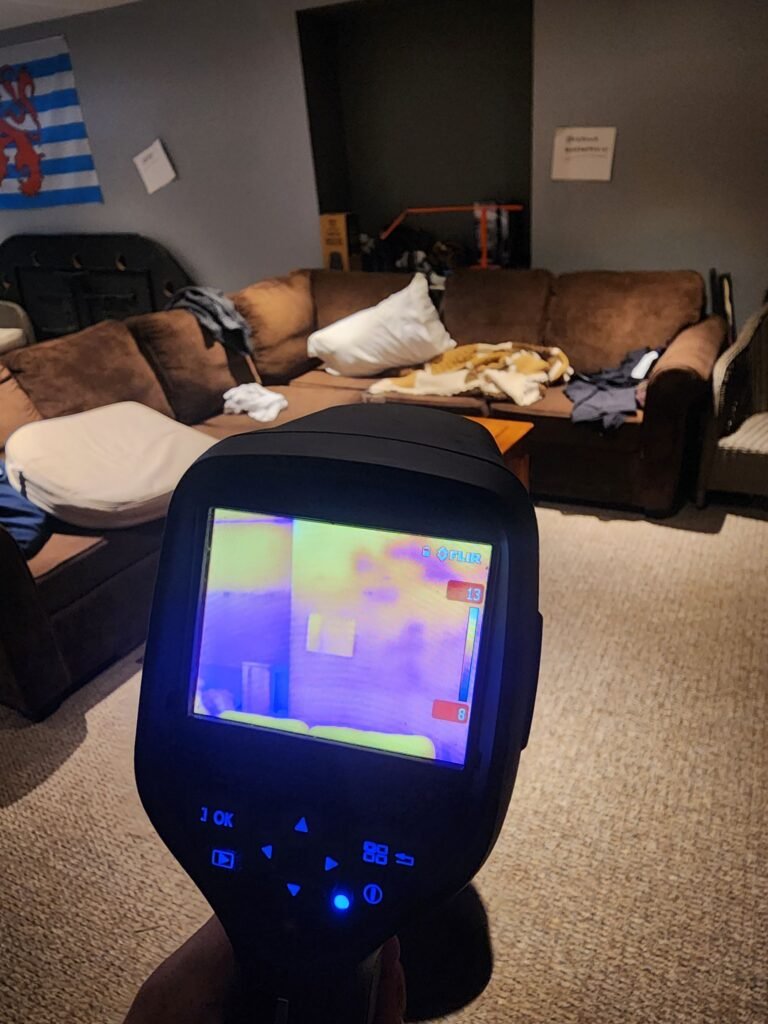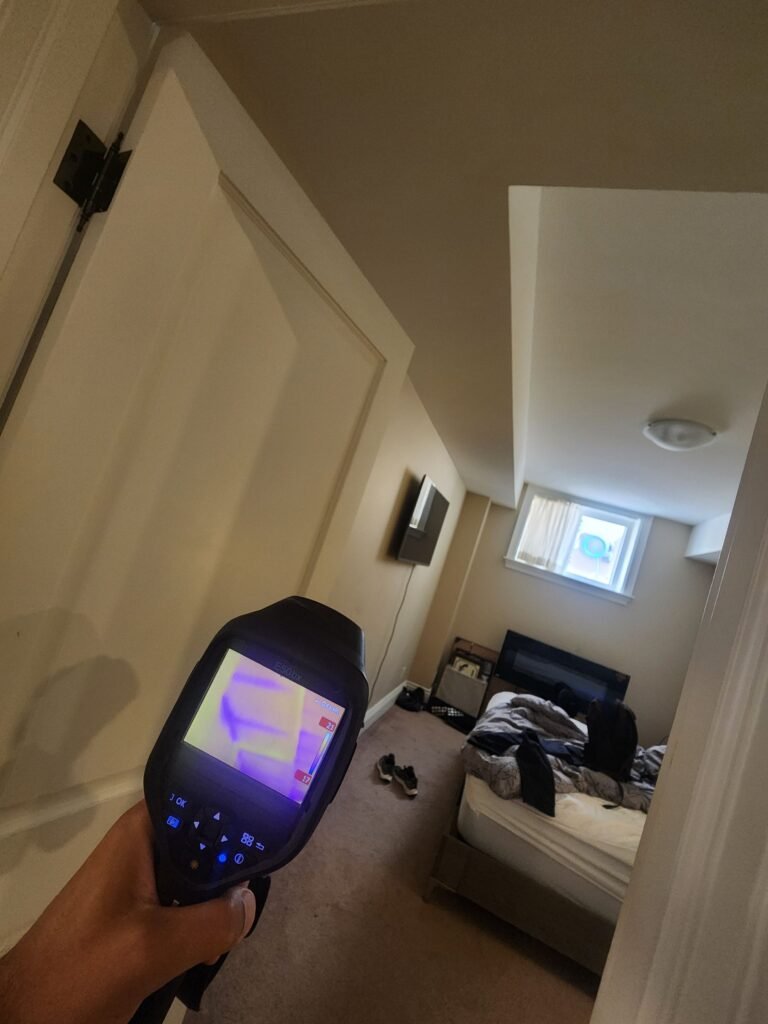Basement Water Damage Services Toronto
Basement water damage can destroy your home in minutes after flooding starts. Water spreads fast through your basement and soaks into walls, floors, and furniture. This causes major damage if you don’t address it right away. Your basement is the lowest part of your home. This makes it more likely to flood during a water emergency. Our team arrives within an hour to handle basement flooding in Toronto and reduce property damage. We use advanced moisture meters to check for water damage. This helps us determine if you have clean water from broken pipes, gray water from appliance leaks, or black water from sewer backups. Our basement restoration work includes removing water, cleaning everything thoroughly, and sanitizing affected areas so dangerous mold can’t grow. This piece covers the main reasons behind basement water damage, our expert assessment methods, and the full cleanup process. We’ll also look at important insurance details Toronto homeowners should know about. We focus on getting your life back to normal quickly and make sure your home looks clean and safe before we leave. Common Causes of Basement Water Damage in Toronto Toronto’s location near Lake Ontario and its varied climate patterns create unique water damage and restoration challenges for homeowners. Your property could face basement flooding risks regardless of past water issues. Learning about common causes will help you prevent water damage that can get pricey. Heavy rainfall and poor drainage Heavy rainfall in Toronto often overwhelms drainage systems, particularly in areas with aging infrastructure. Municipal storm sewers can’t handle the load in many neighbourhoods, which leads to flooding. The situation worsens when poor lot grading sends water toward your foundation instead of away from it. Water-saturated soil around your home creates hydrostatic pressure against basement walls and forces water through any opening. This pressure is stronger in homes with high water tables. This is especially true for Toronto homes near Lake Ontario. Signs of drainage problems include: Sump pump failure or malfunction Basement flooding can occur even in homes with sump pumps. Your basement could flood quickly if these vital systems stop working. Sump pumps typically fail because of power outages, clogged discharge lines, and mechanical issues. Some pumps work fine in normal conditions, but can’t handle heavy downpours. Standard pumps become useless during power outages without a battery backup—right when you need them most. Sewer backups and plumbing issues Sewer backups pose a significant flooding risk in Toronto basements. About 23% of Toronto communities use combined sewer systems that back up during heavy rainfall. Contaminated water often enters through floor drains and creates serious health risks. Plumbing issues, such as burst pipes, blocked lines, and broken appliances, can release hundreds of gallons of water quickly. Tree roots often invade old sewer lines in search of moisture. This can cause blockages that push water back into basements. Foundation cracks and wall seepage Toronto’s freeze-thaw cycles create ideal conditions for foundation damage. Water finds its way through even the smallest foundation cracks. These cracks develop from soil movement, foundation settling, or pressure from waterlogged soil. Water seepage between walls and floors points to groundwater issues and hydrostatic pressure pushing moisture through concrete. Horizontal cracks indicate structural problems, while vertical cracks result from normal settling but still let water in. Older homes face higher risks of seepage through basement walls and floors due to deteriorating waterproofing. Original waterproofing breaks down as basements age, which allows moisture to seep in even without visible cracks. How Professionals Assess Basement Water Damage A professional assessment of basement water damage requires a careful approach. This will provide a complete view of the damage and help create a good restoration plan. Expert technicians use specialized tools and techniques to review moisture levels with precision. Using moisture meters and thermal imaging Hidden moisture detection needs sophisticated equipment because visual inspection isn’t enough. Thermal imaging cameras spot subtle temperature differences that show water presence, though they can’t directly “see” moisture. High resolution and thermal sensitivity help these cameras detect the smallest temperature changes from moisture. Experts use moisture meters to confirm what thermal cameras show. Water conducts electricity better than dry materials, which is how these meters work. Pin-type meters measure electrical resistance between two points, and pinless meters use electromagnetic waves to check moisture content. Wood typically shows readings of 6-12%, drywall 0.5-1%, and concrete 2-4%. Identifying water damage categories (clean, gray, black) Water damage restoration basement falls into three main categories: Inspecting hidden areas and adjacent rooms A detailed assessment covers all potentially affected areas. Experts check attics, basements, areas under sinks, crawlspaces, and nearby rooms. They look for water marks on ceilings, wall discoloration, peeling paint, warped floors, rusted metal fixtures, and musty smells. The building’s exterior needs inspection too, including roofs, gutters, and water sources. Documenting damage for insurance purposes Detailed documentation creates a complete record of damaged items and affected areas. Experts capture thermal and digital photos with notes to show the “before” condition. This documentation will give a strong case for insurance claims. Moisture maps help show problem areas and track how well drying works over time. The Basement Water Damage Cleanup Process You need to act fast when your basement floods since mold starts growing within 24-48 hours after water damage. Our complete cleanup process has four main steps to get your basement back to normal. Step 1: Water extraction and removal The original safety check looks for electrical hazards before we turn off utilities. We use wet/dry vacuums for small floods under 6 inches, while moderate flooding needs sump pumps. Our industrial-grade equipment removes standing water quickly when severe contamination occurs. This stops water from seeping deeper into foundations. Step 2: Cleaning and disinfecting affected areas After removing water, we clean everything to get rid of contaminants. We use dish soap and water for most surfaces instead of bleach. Contaminated floodwater requires antimicrobial treatments to kill bacteria and eliminate odours. We carefully disinfect all affected surfaces – walls, floors, and items we can save to prevent health risks. Step 3: Drying and dehumidification We set up commercial dehumidifiers and air movers to remove leftover moisture. The process usually takes 48-72 hours of non-stop operation. Our moisture









